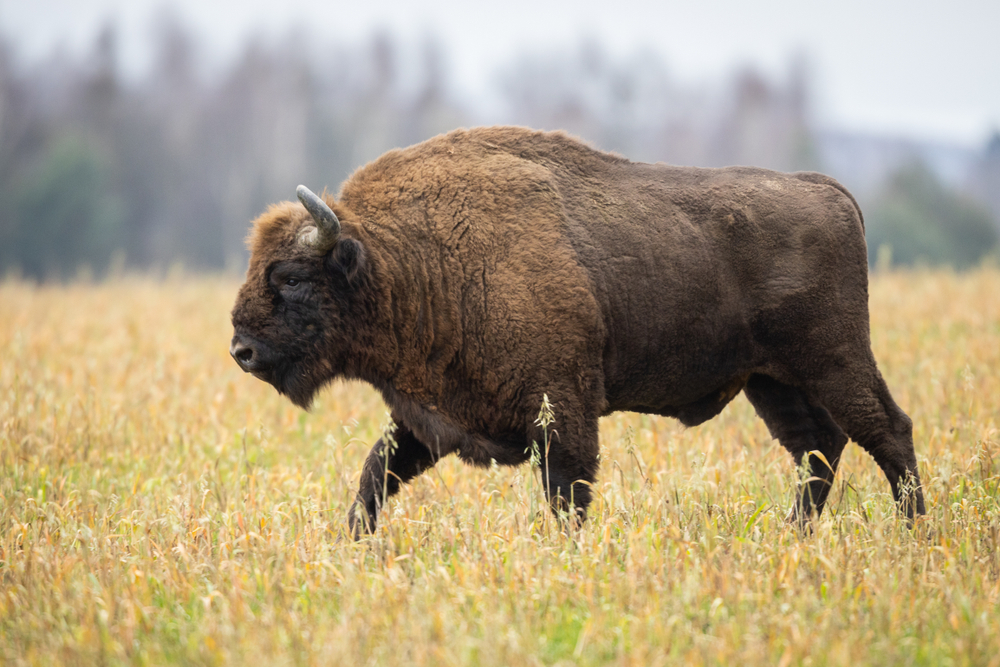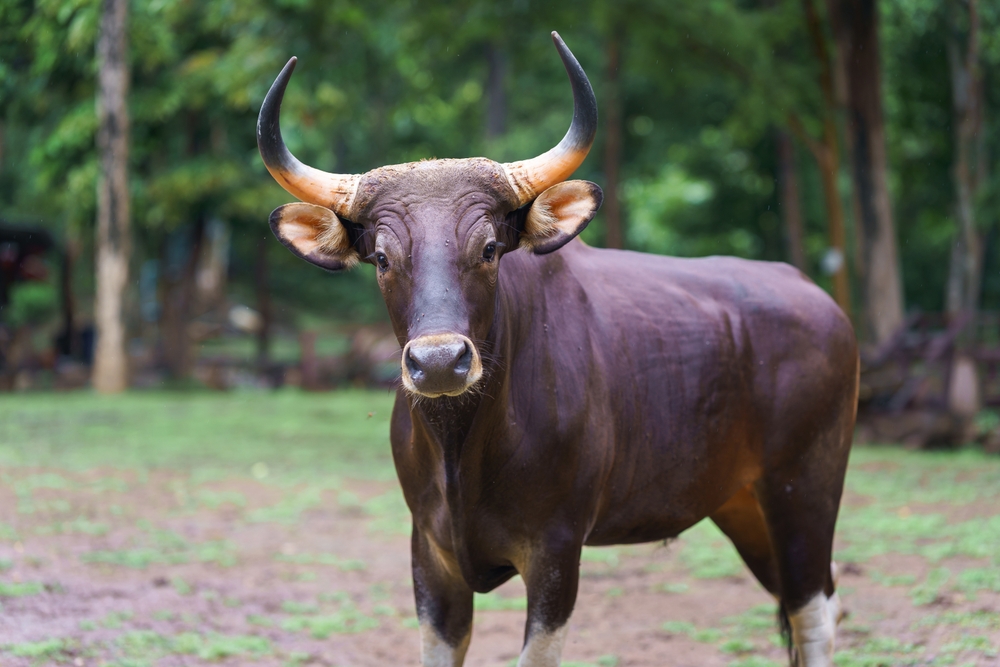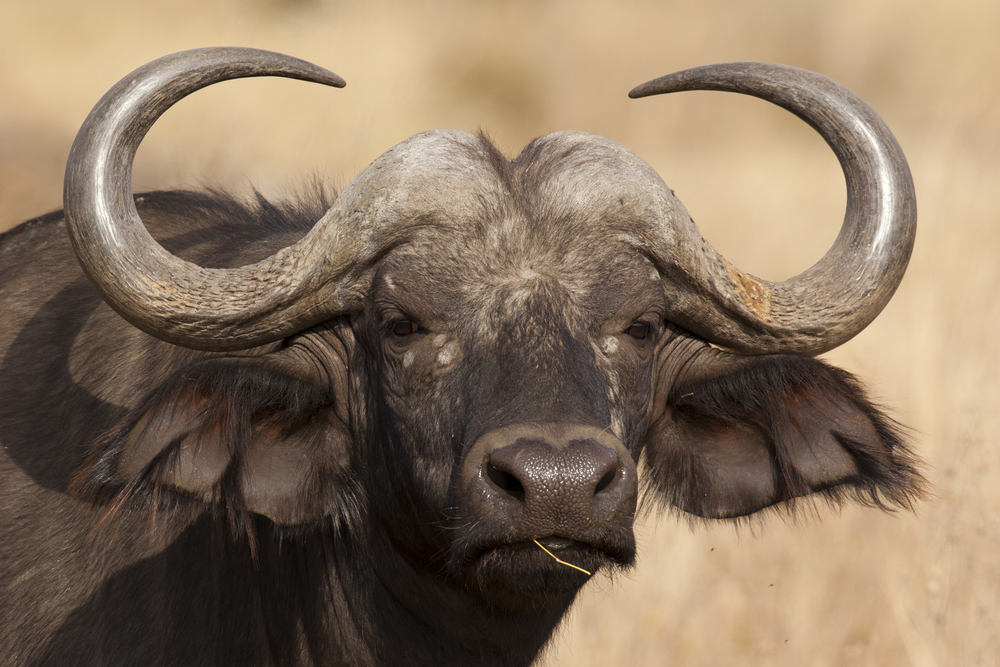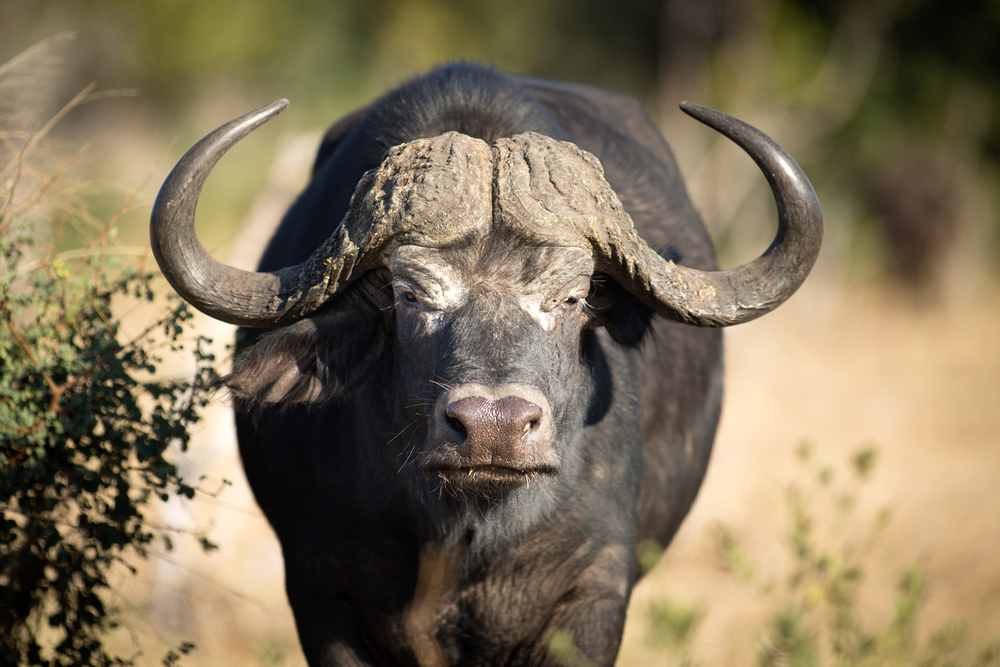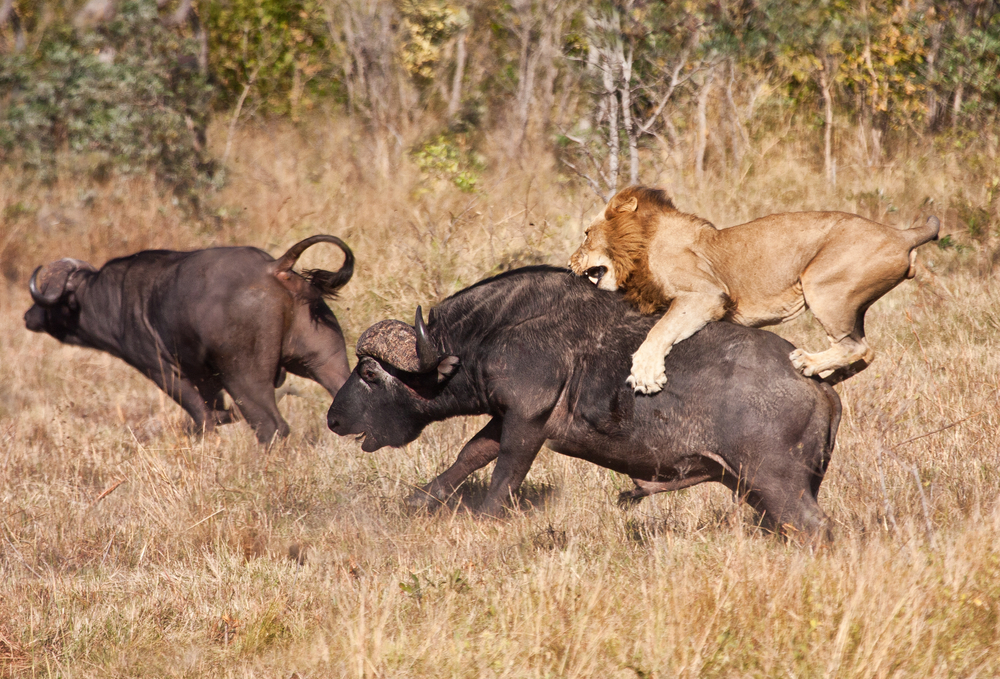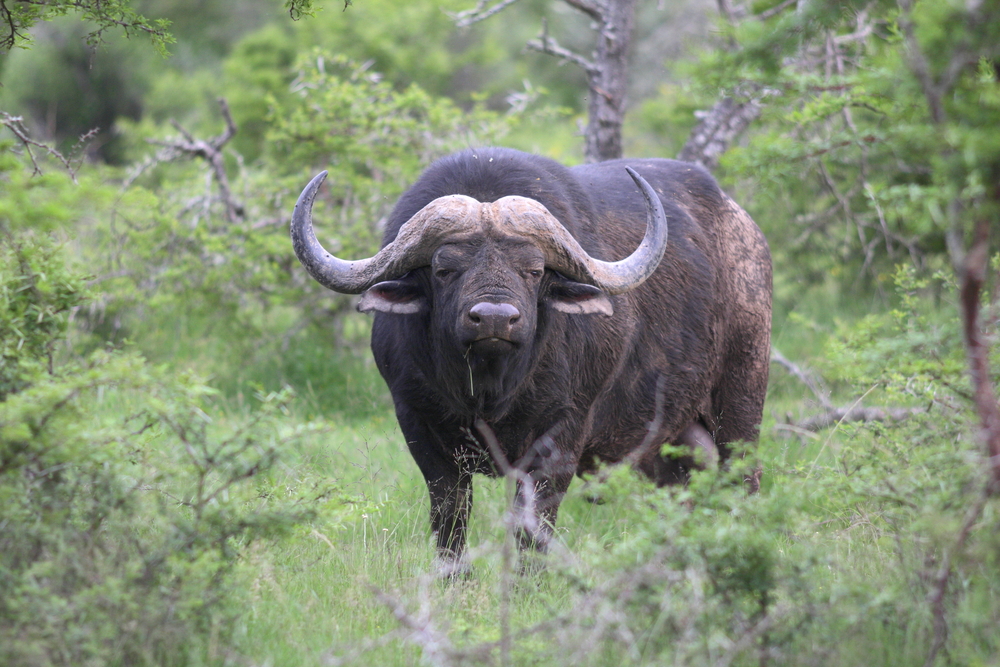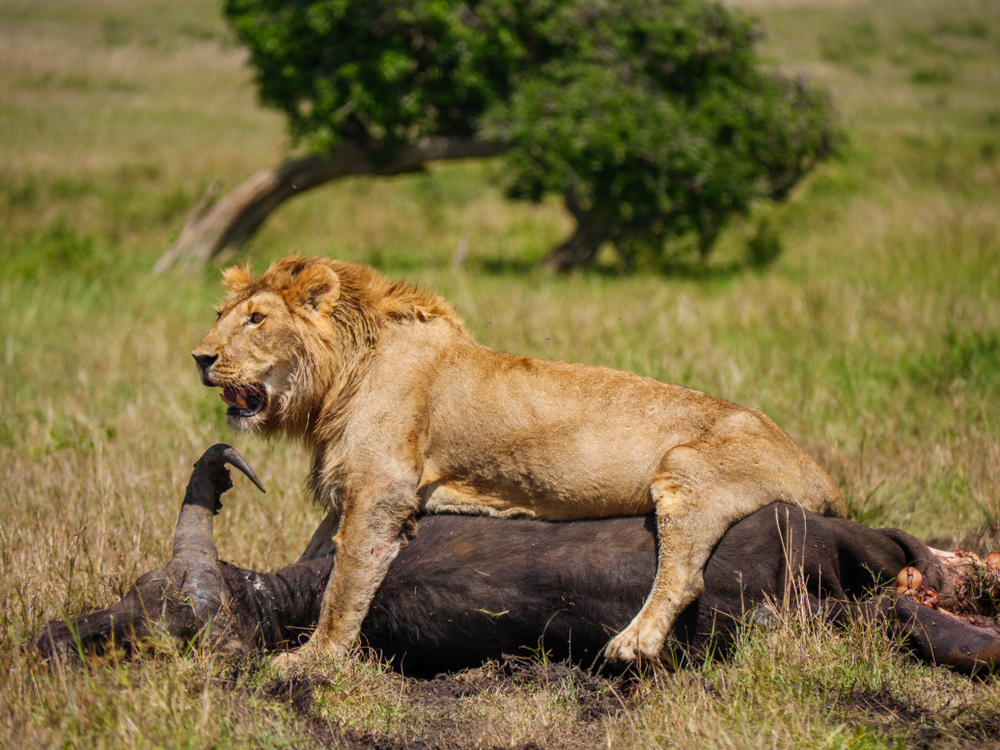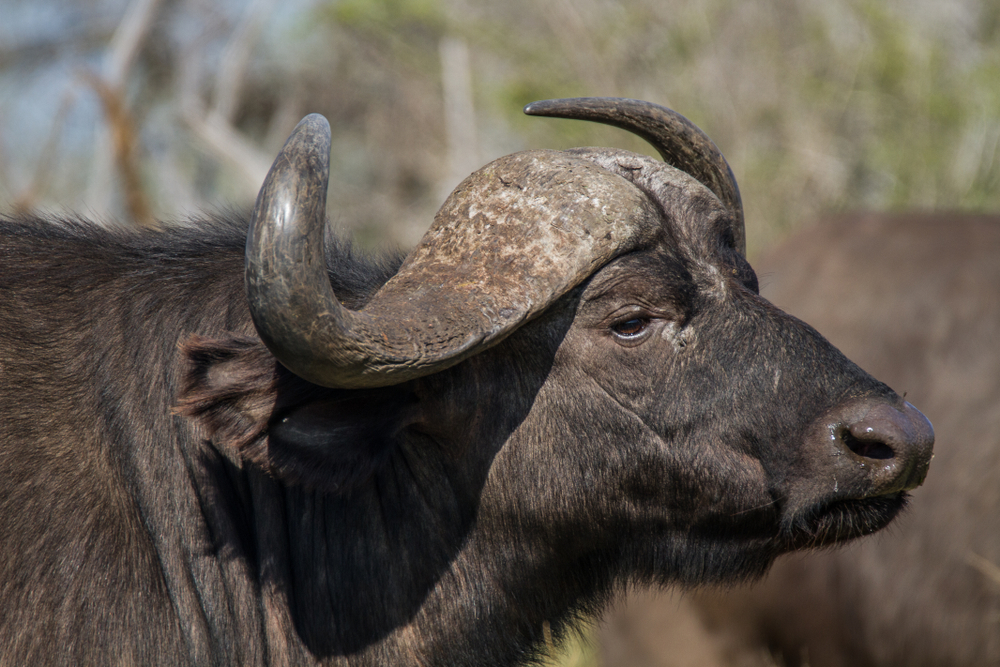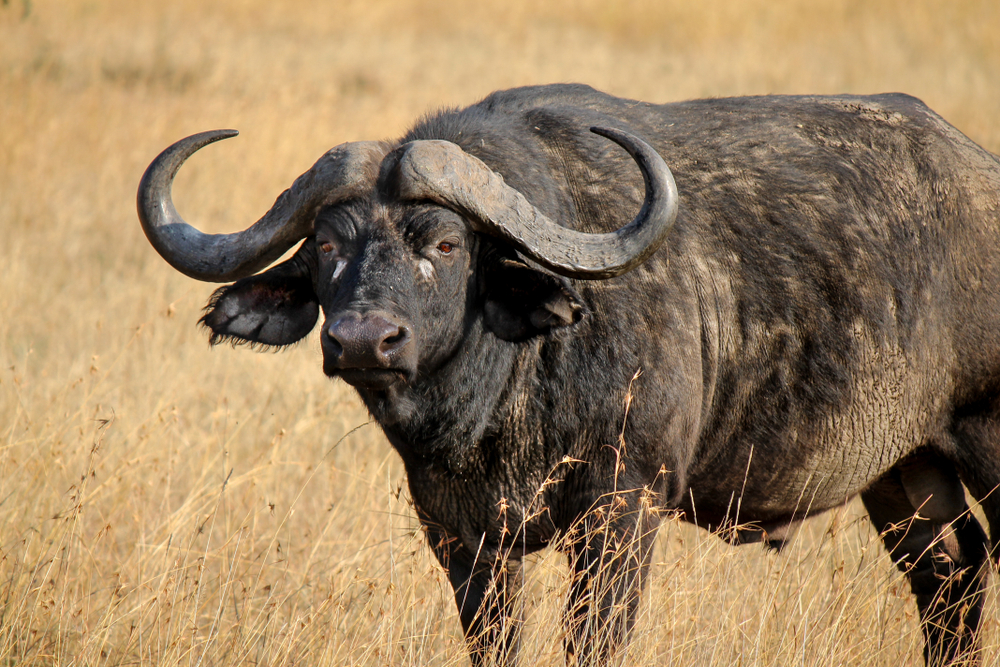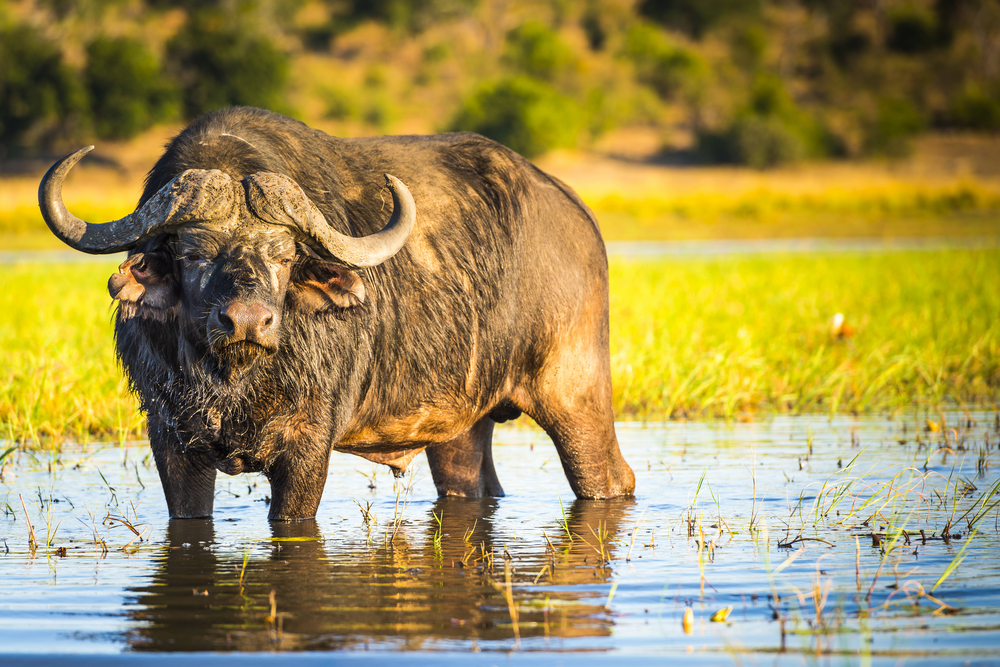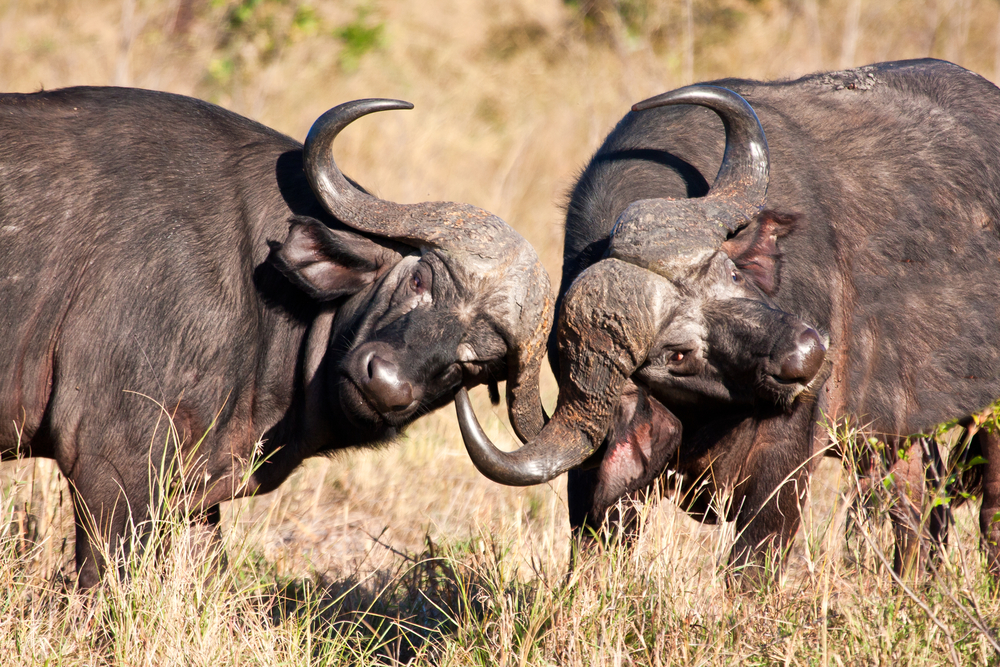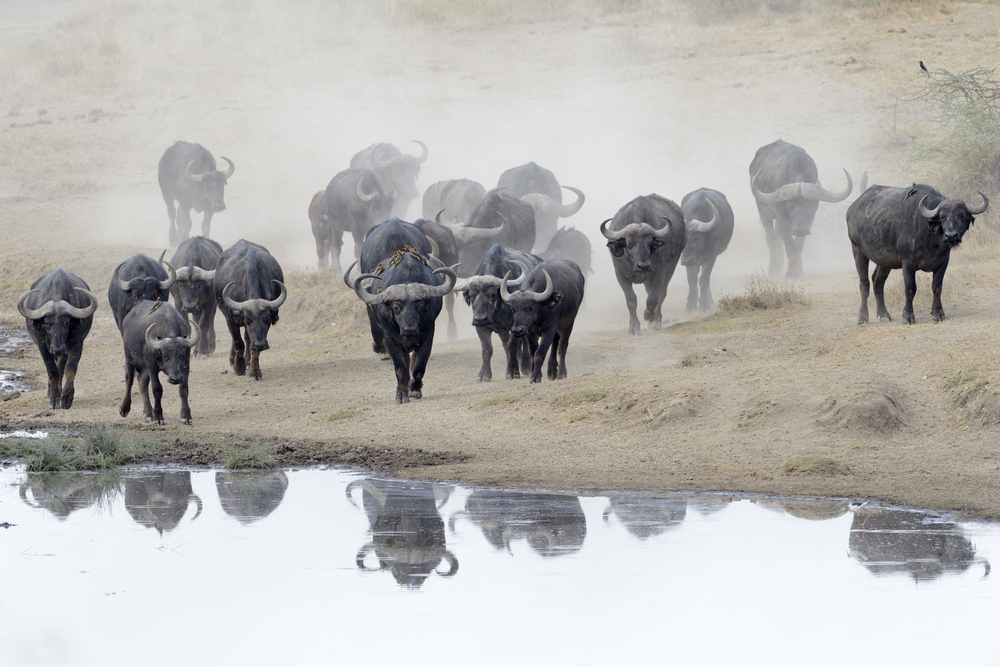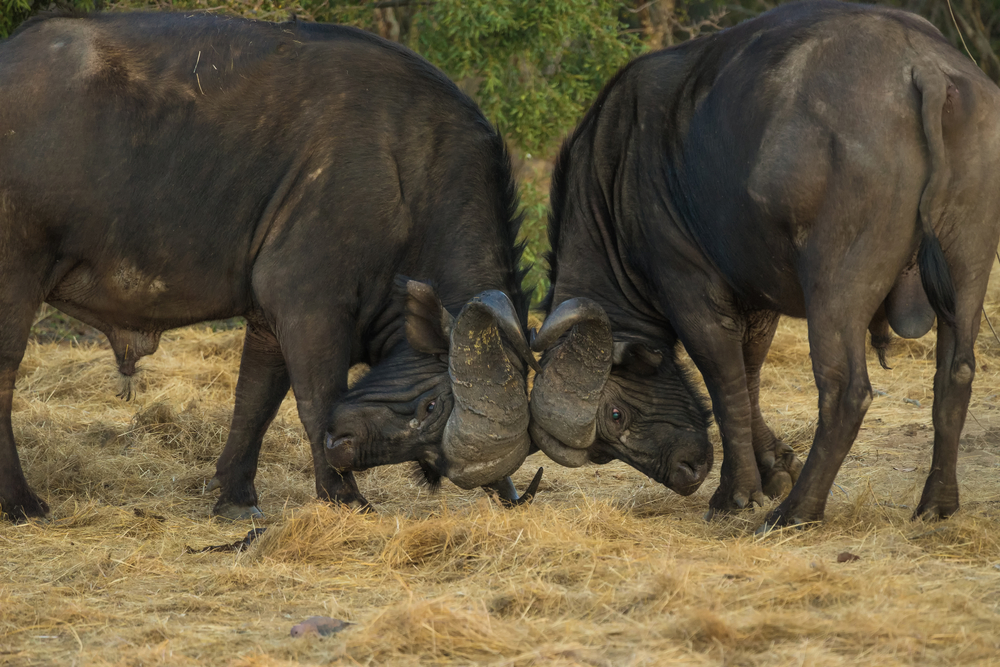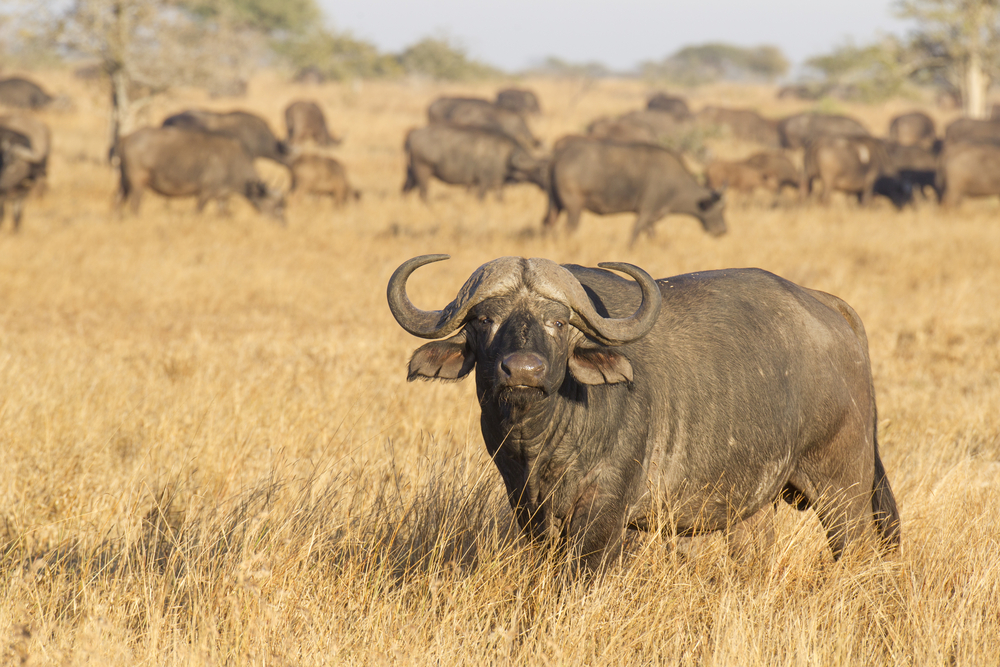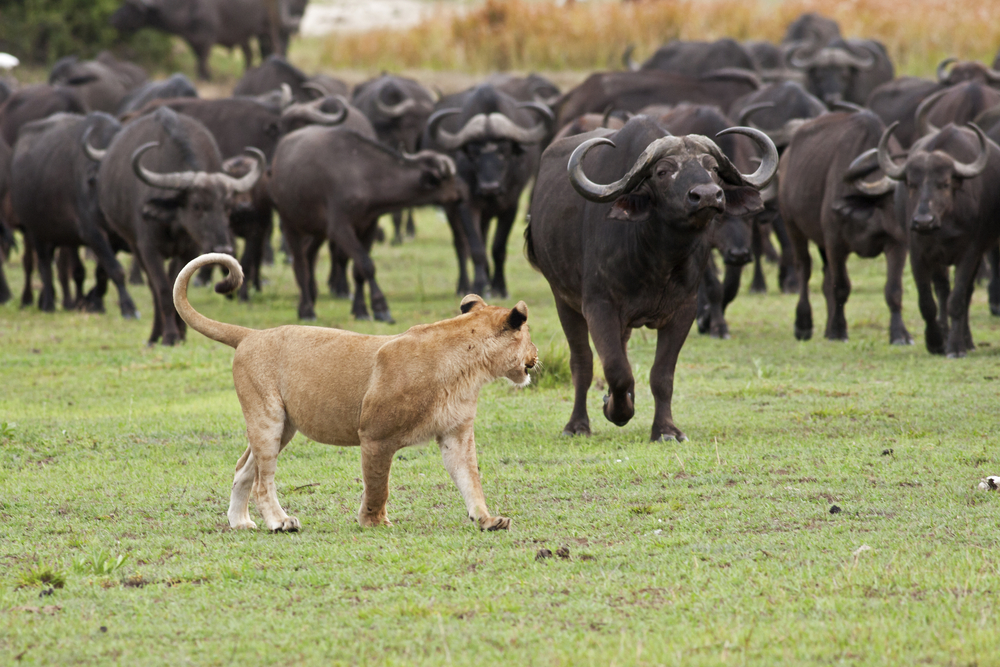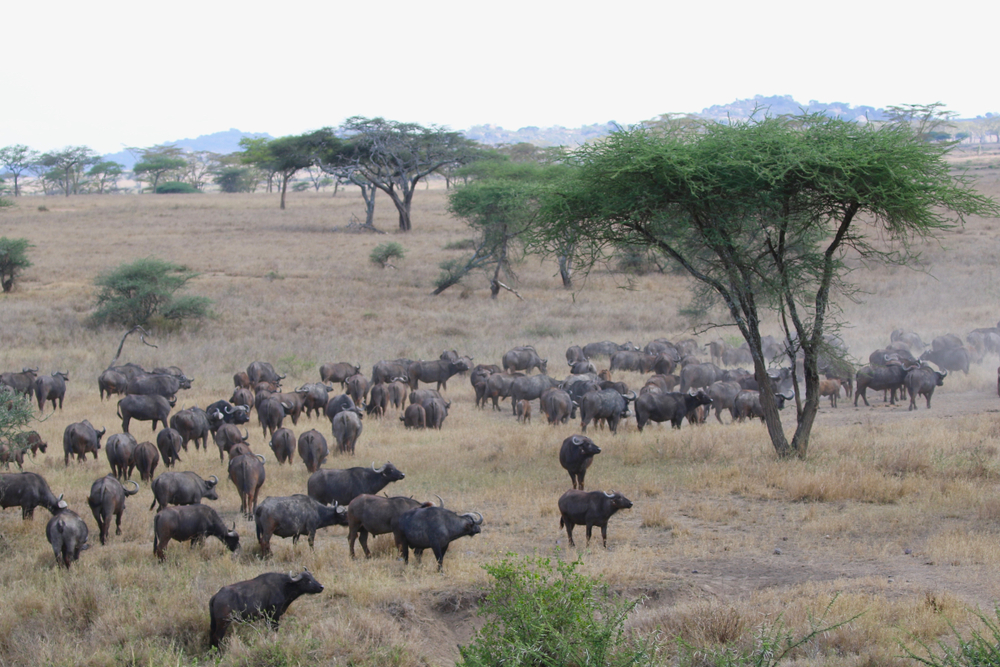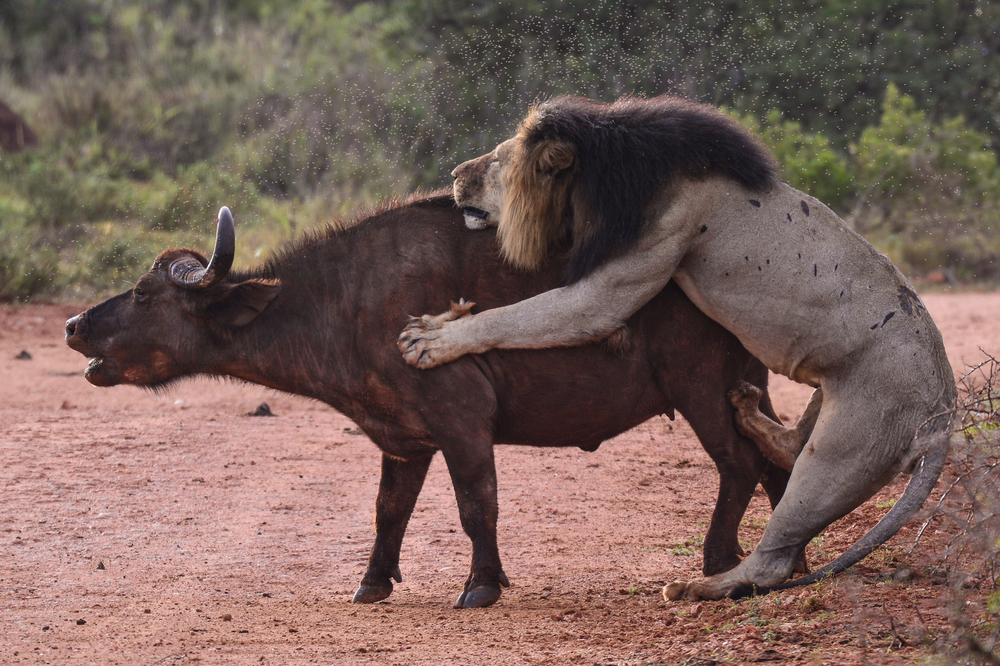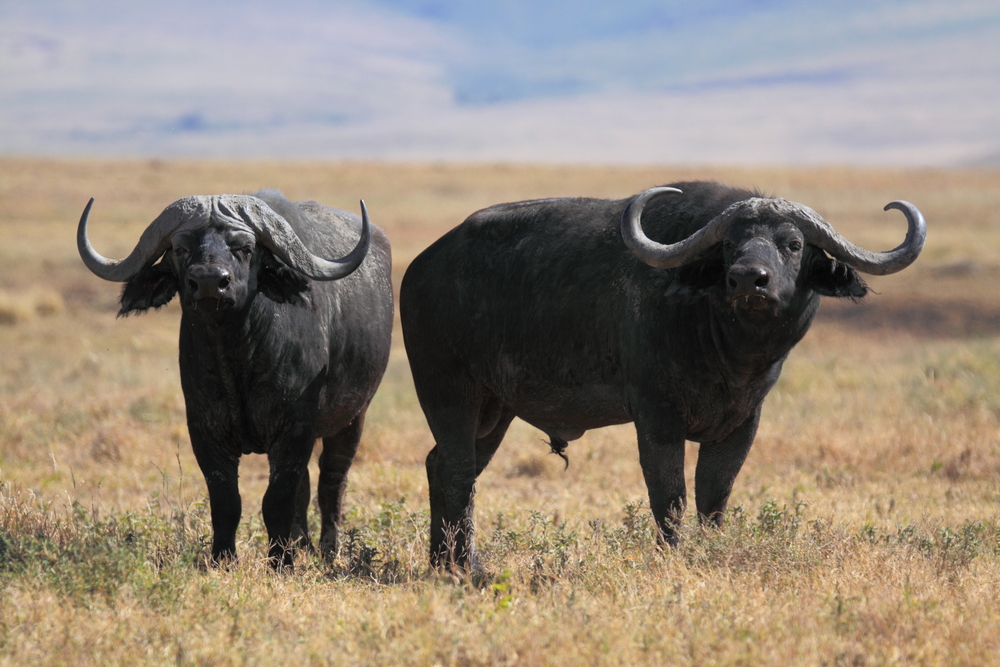Physical Characteristics
The Cape Buffalo is a robust, powerfully built bovid, widely recognized for its imposing horns, muscular frame, and unpredictable temperament. As the largest subspecies of African buffalo, it is a dominant presence on the savannas of sub-Saharan Africa.
Size and Weight
Cape Buffaloes are among the heaviest wild bovines in the world:
-
Adult males (bulls) typically weigh between 700–900 kg (1,540–2,000 lbs) and stand 1.5–1.7 meters (5–5.6 feet) at the shoulder.
-
Females (cows) are smaller, averaging 500–700 kg (1,100–1,540 lbs) and 1.2–1.4 meters (4–4.6 feet) in height.
Their bodies are stocky and muscular, with a deep chest, thick neck, and relatively short but powerful legs.
Coat and Coloration
The coat is usually dark brown to black, with little to no variation between the sexes. Calves are born with a lighter, reddish-brown coat, which darkens as they mature. Their hair is short, coarse, and sparse, offering minimal insulation but suited for hot climates.
Horns and the Boss
The Cape Buffalo’s most distinguishing feature is its horn structure:
-
Both sexes have horns, but male horns are much larger and more developed.
-
The horns curve outward and downward, then upward in a hook shape.
-
In males, the bases of the horns fuse across the forehead to form a thick, armored shield called a “boss.”
-
Horns can span over 1 meter (3.3 feet) across in mature bulls.
This horn formation serves as both a weapon and a status signal—used in fighting, dominance contests, and defense against predators like lions.
Head and Facial Features
Cape Buffaloes have a broad, heavy head with small, sharp eyes, large, fringed ears, and wide nostrils. The muzzle is blunt, and their lips are tough, allowing them to graze on coarse grasses.
Legs and Hooves
Though short, their legs are exceptionally strong and end in wide, cloven hooves adapted to carry heavy weight over soft soils, floodplains, and savannas. Despite their size, they can run up to 35 mph (56 km/h) and are surprisingly agile when provoked.
Sexual Dimorphism
Males are larger, bulkier, and possess thicker horns and more prominent bosses than females. Older bulls often have scarred hides and mud-caked flanks, a result of wallowing and fighting.
In summary, the Cape Buffalo’s massive size, fused horn boss, and compact muscularity make it one of the most formidable and recognizable animals in Africa—respected equally by predators, rivals, and observers alike.

































































